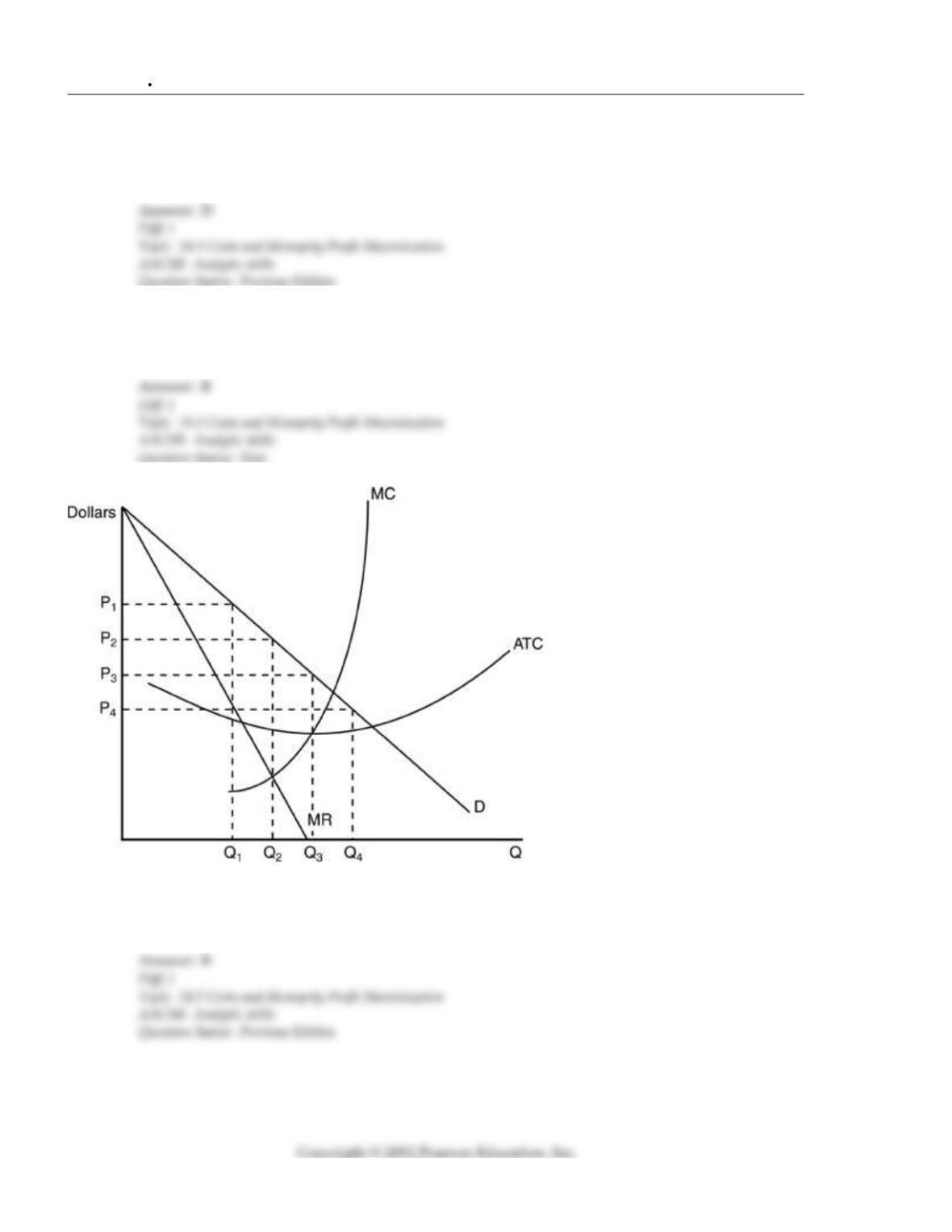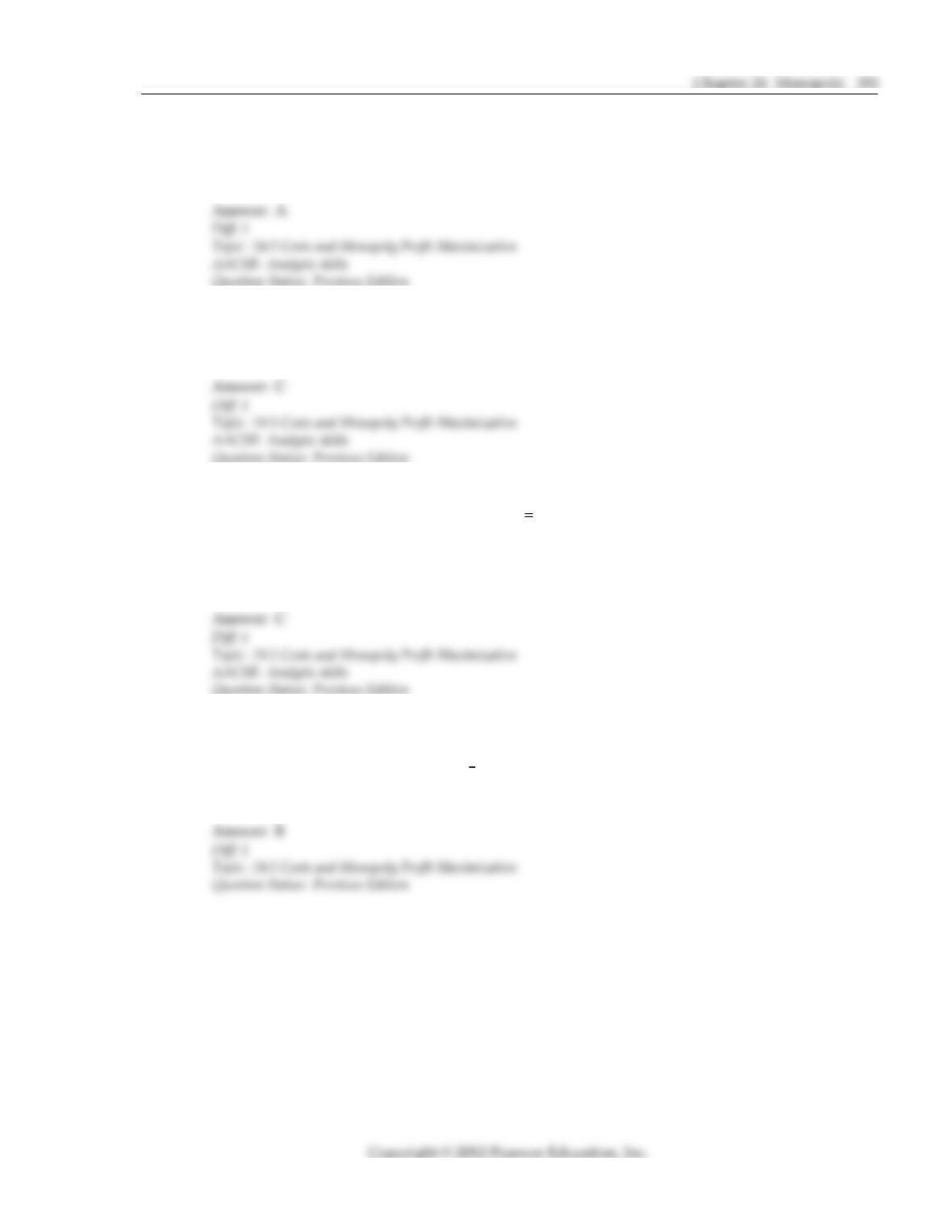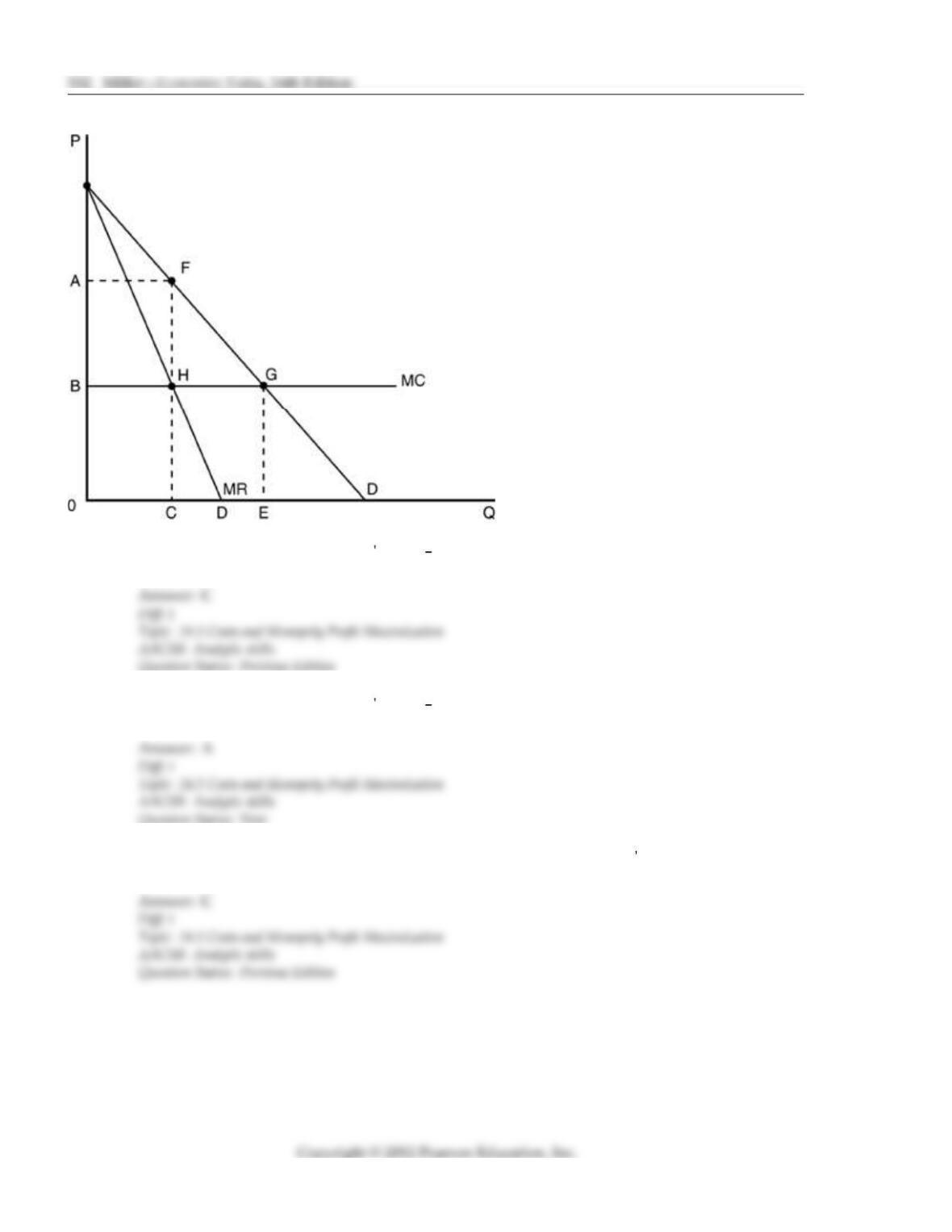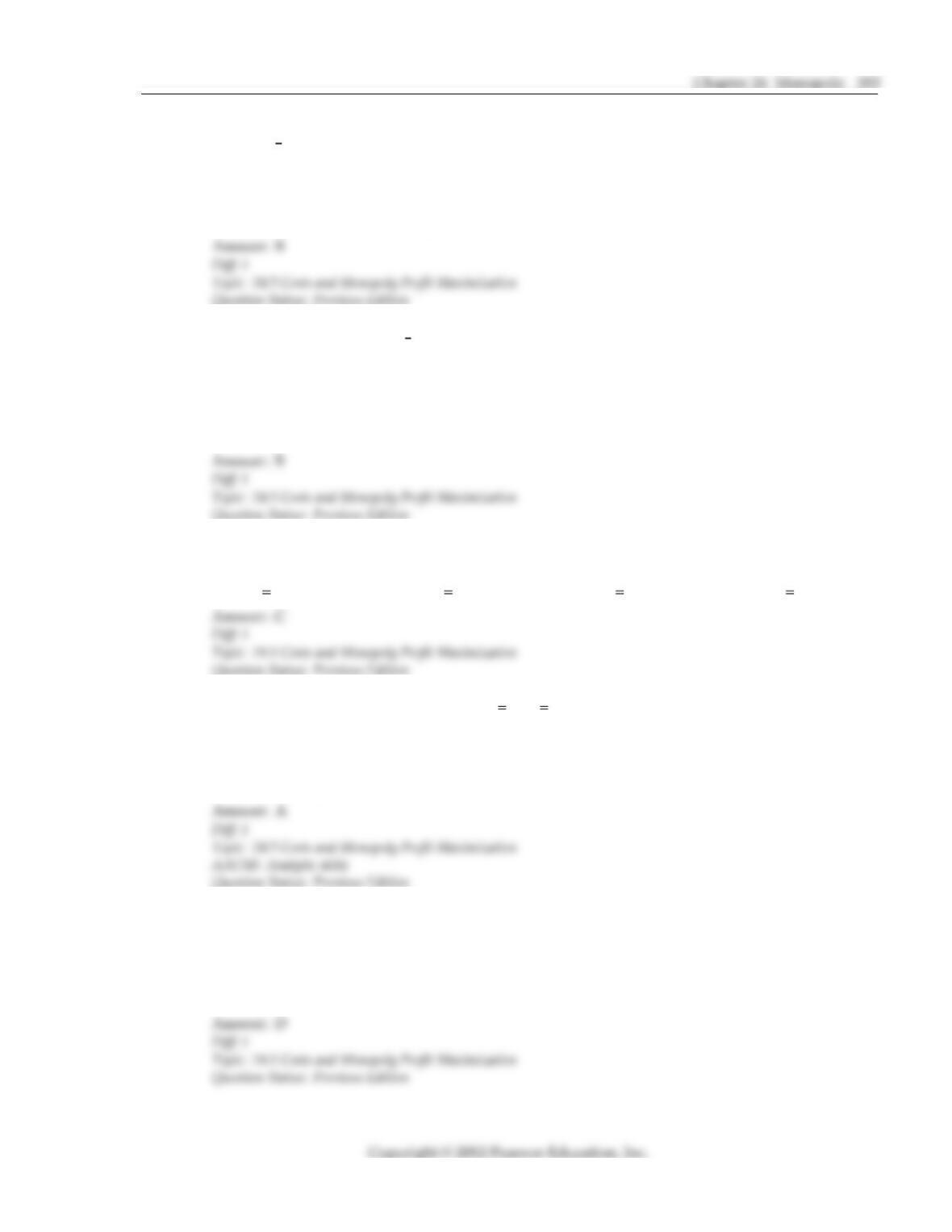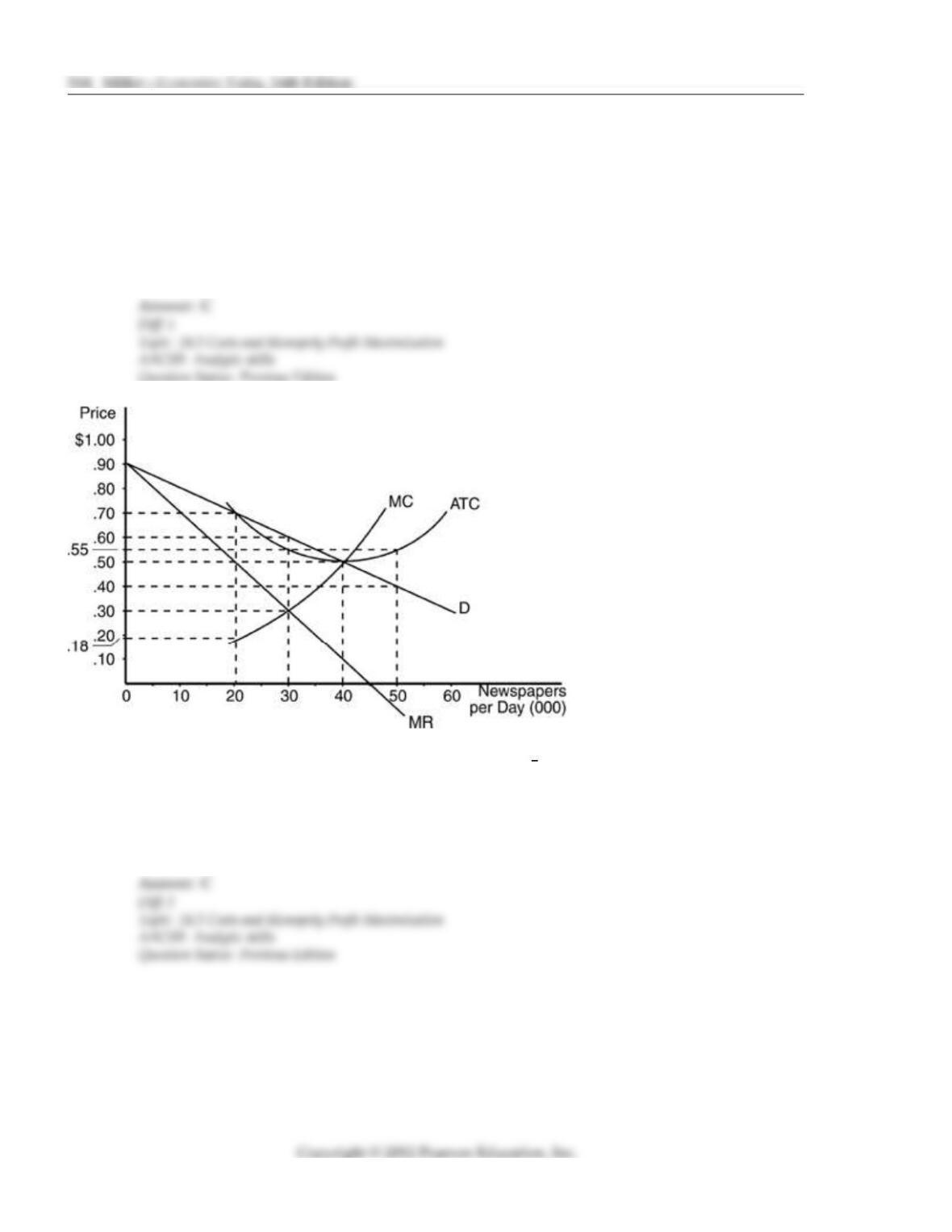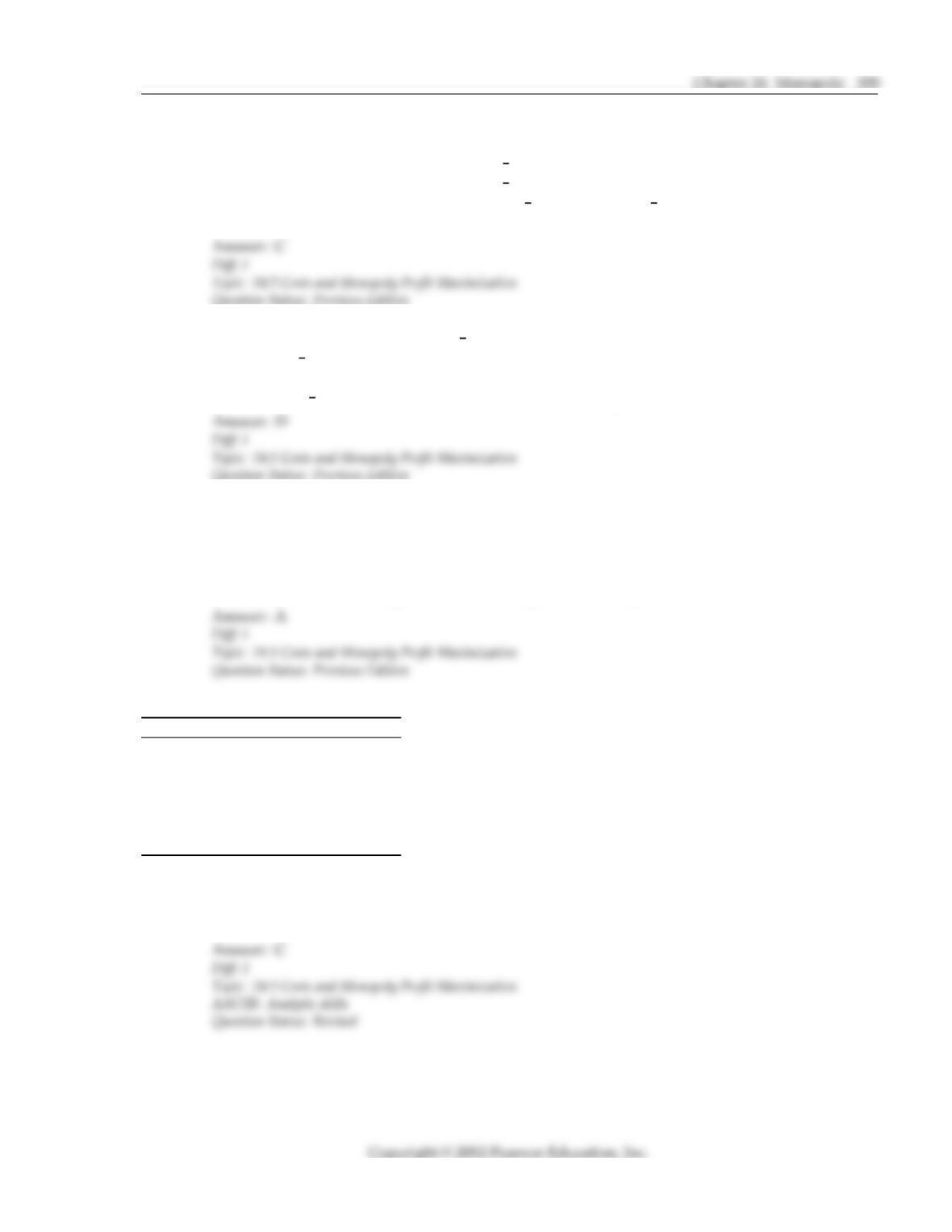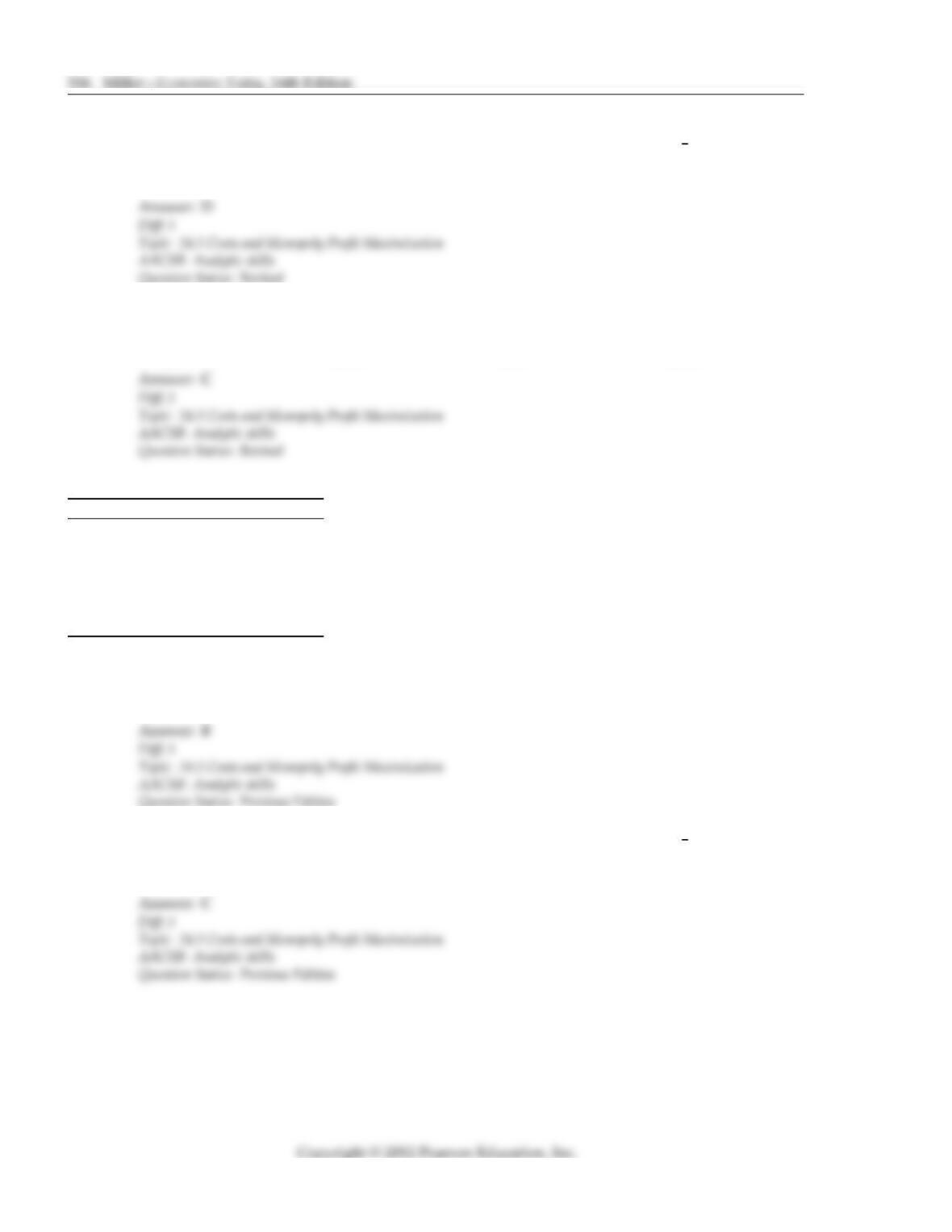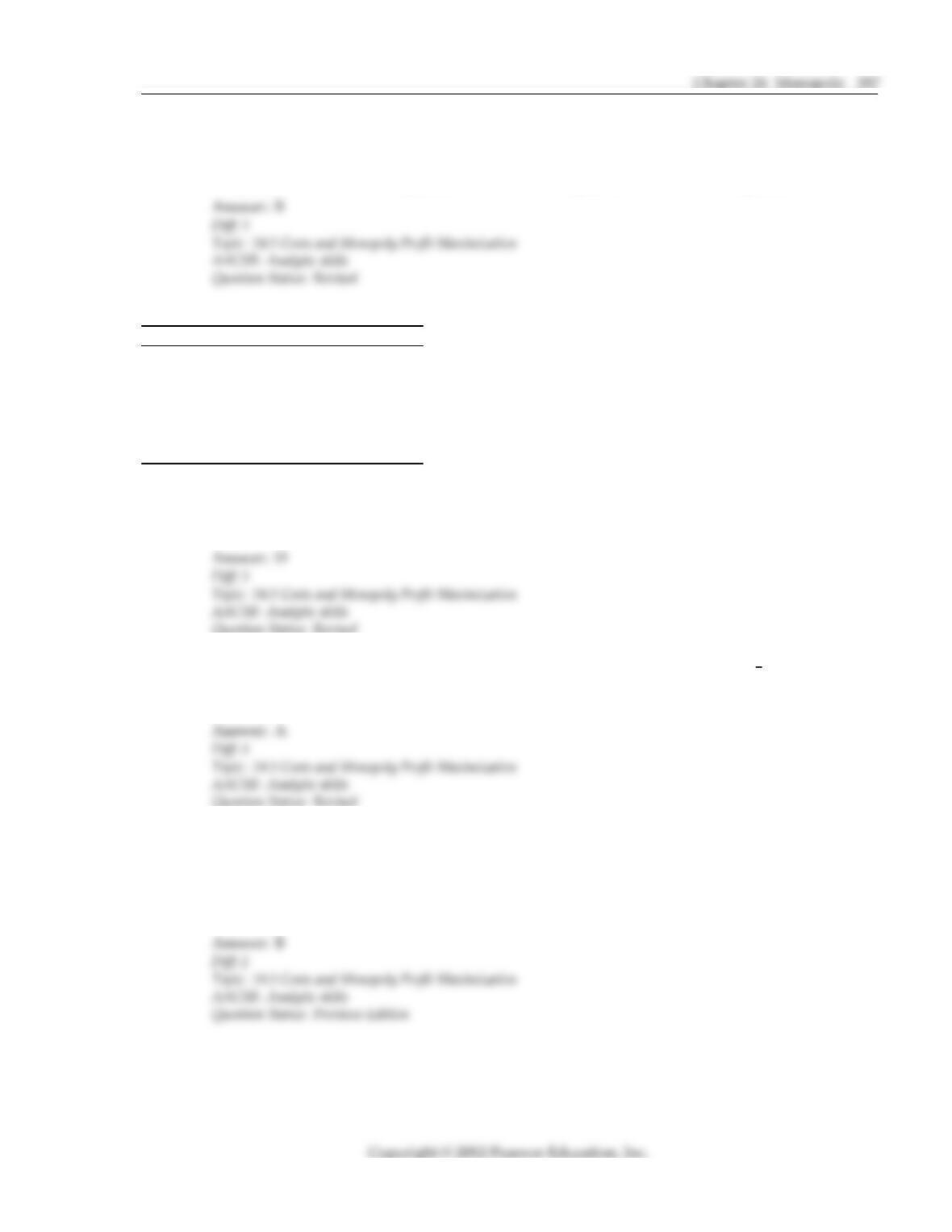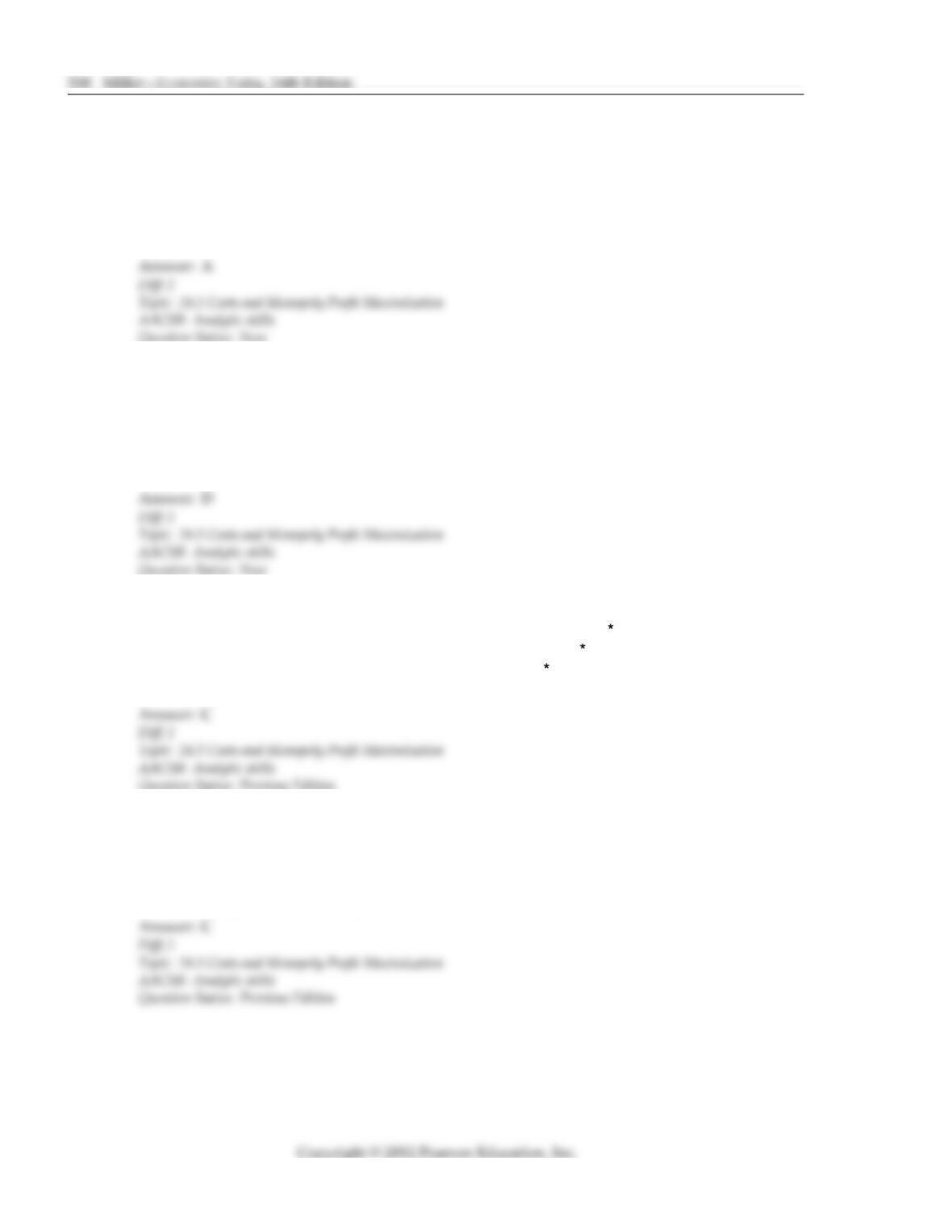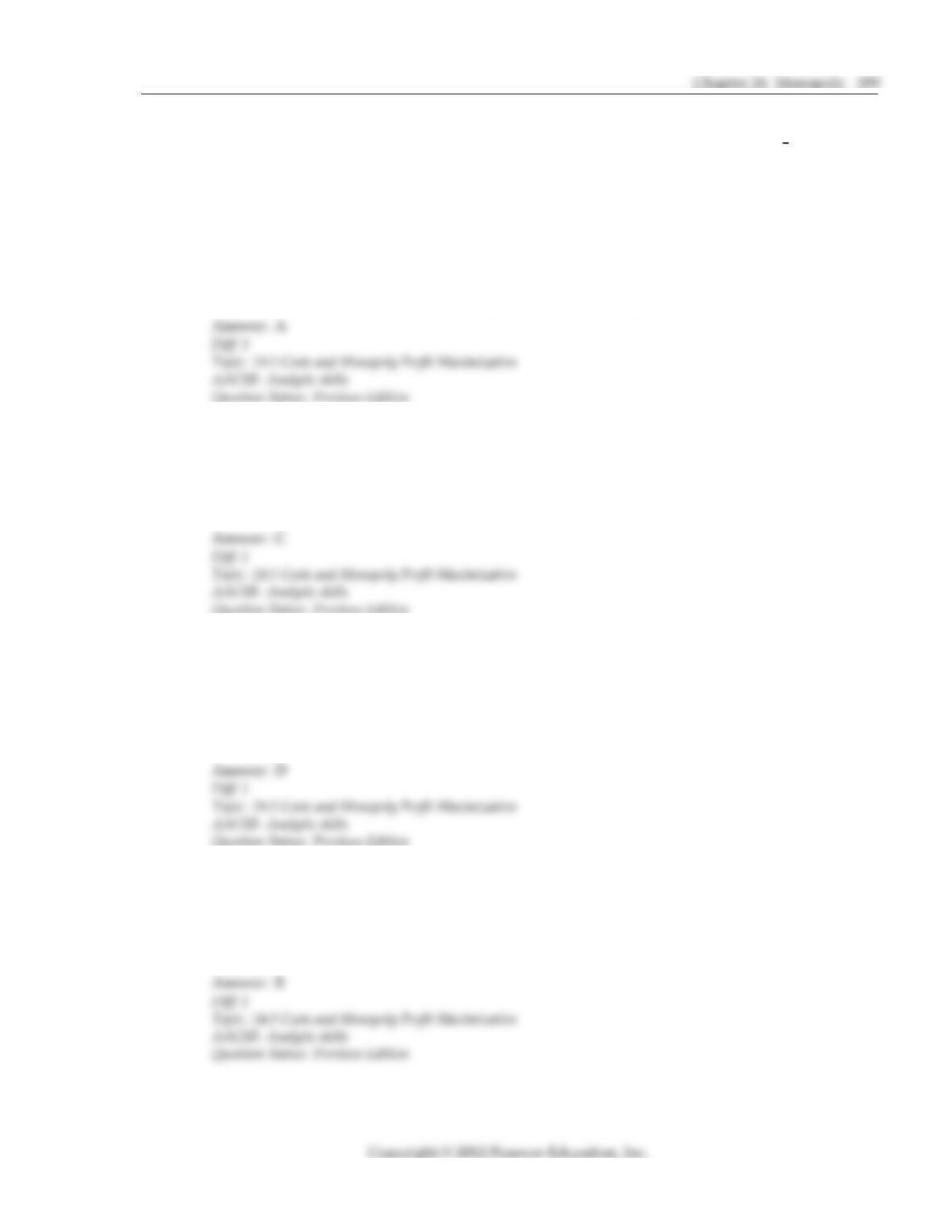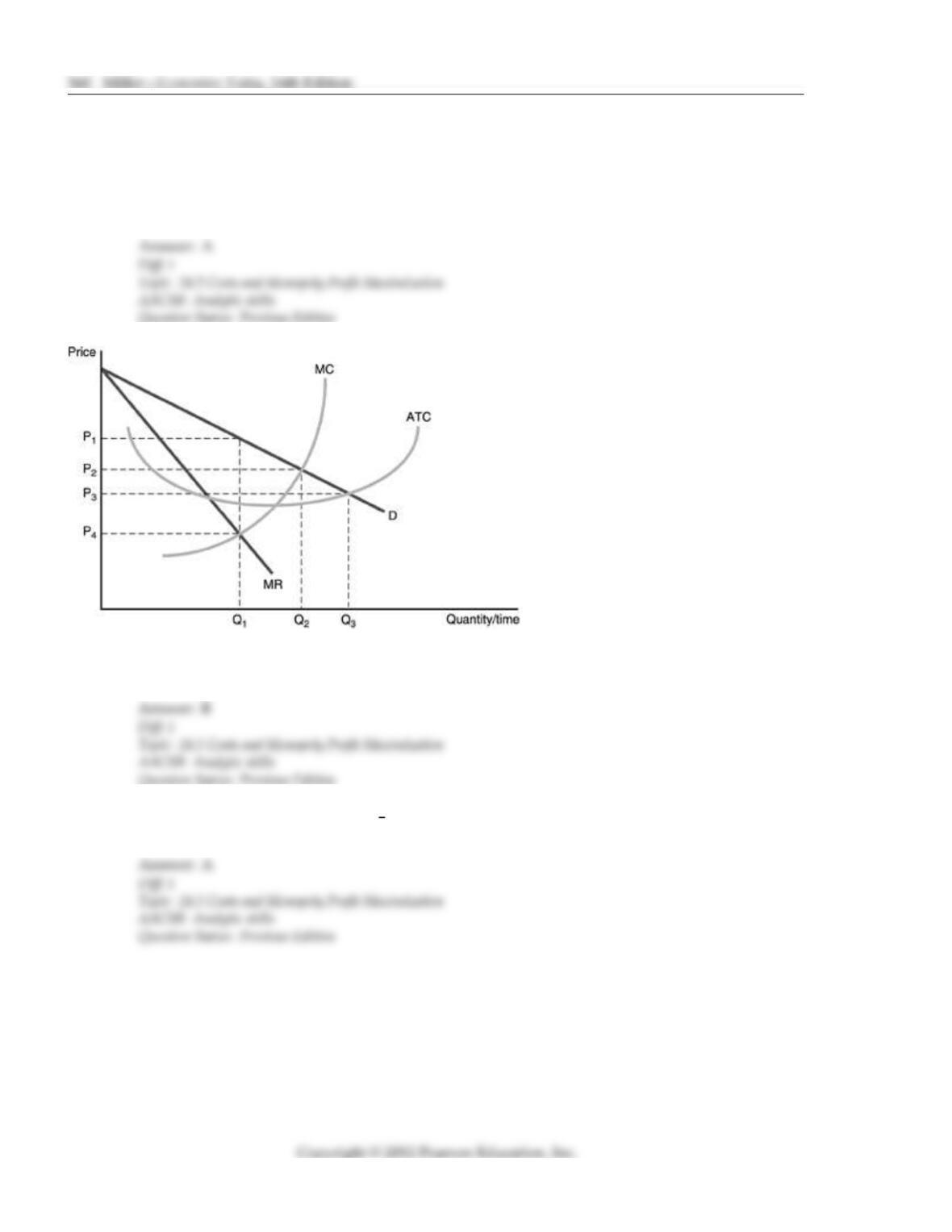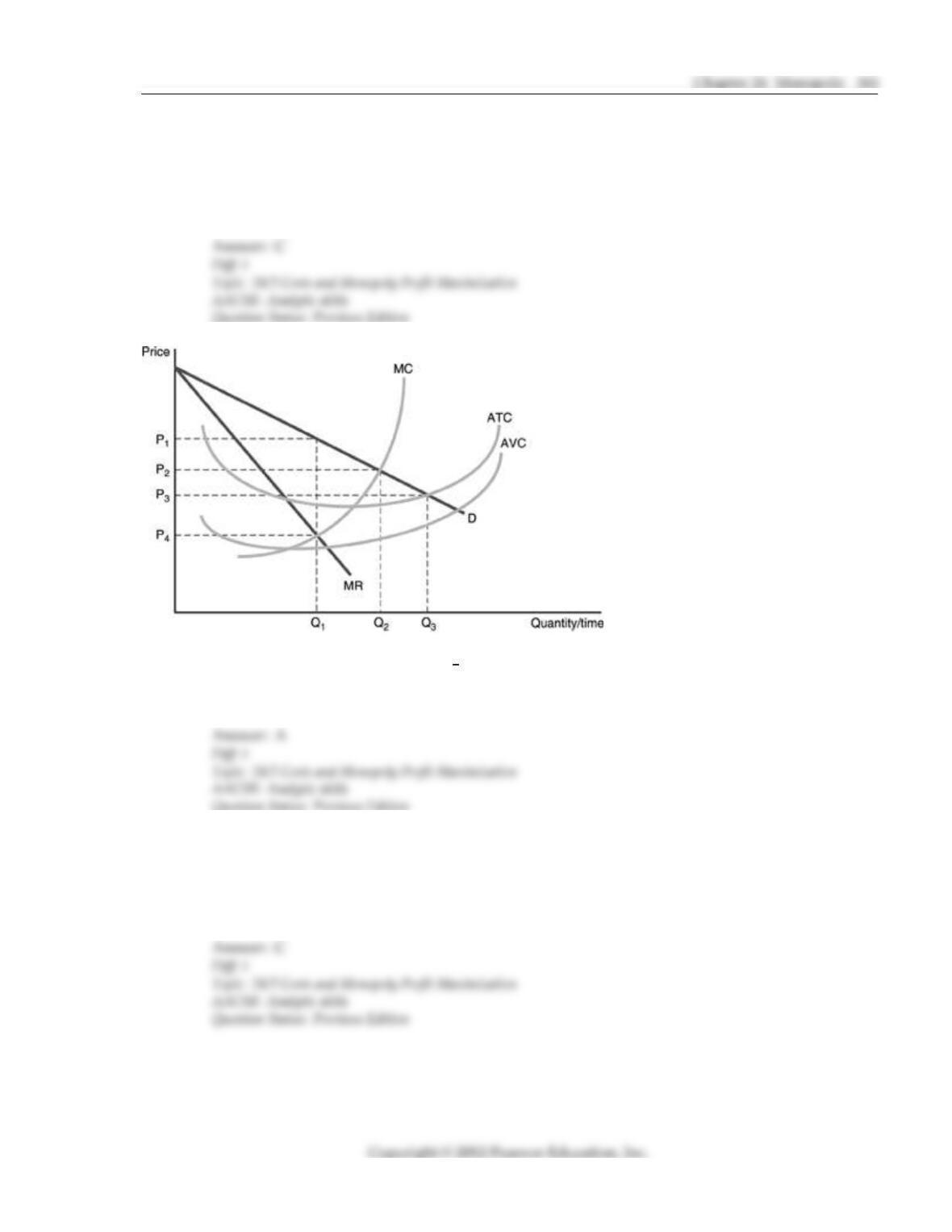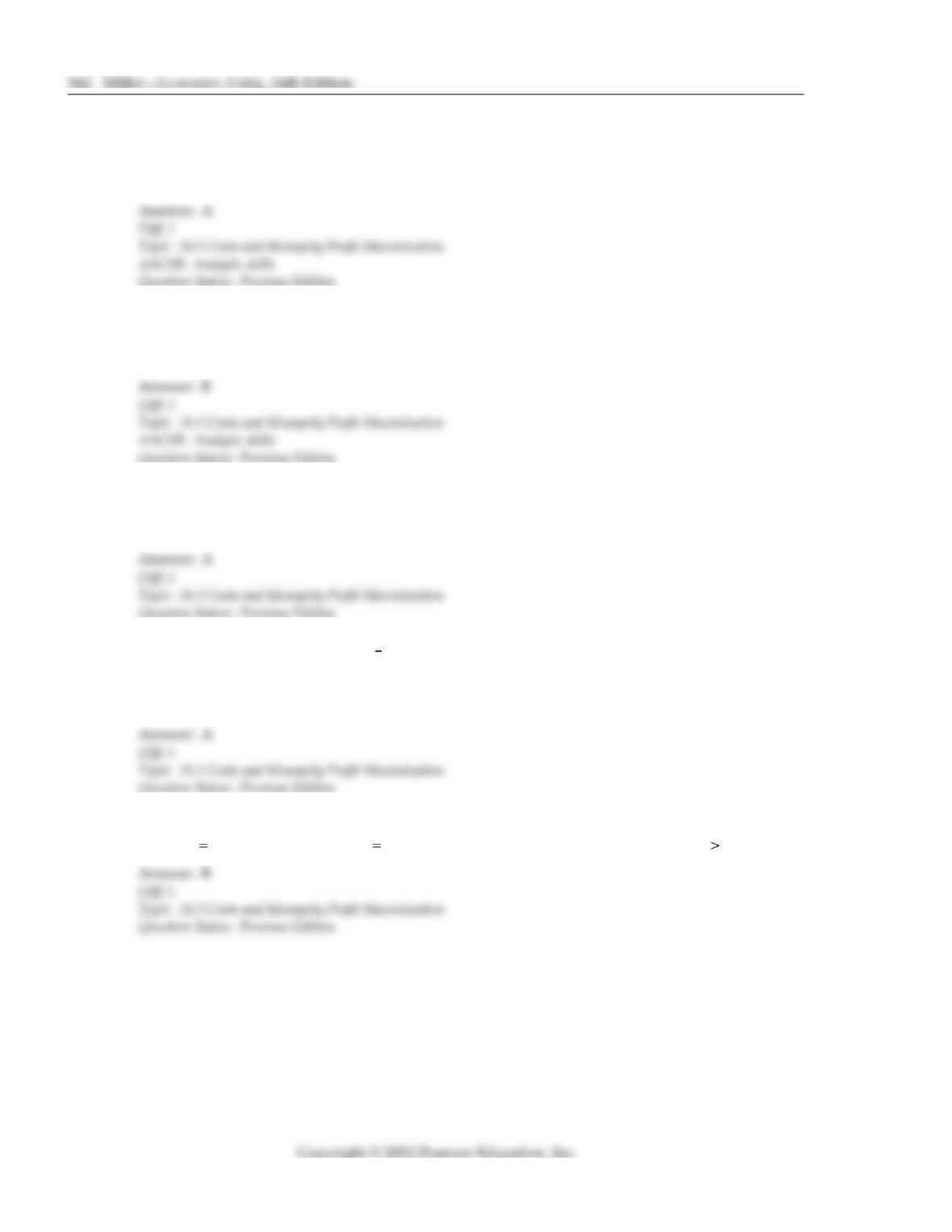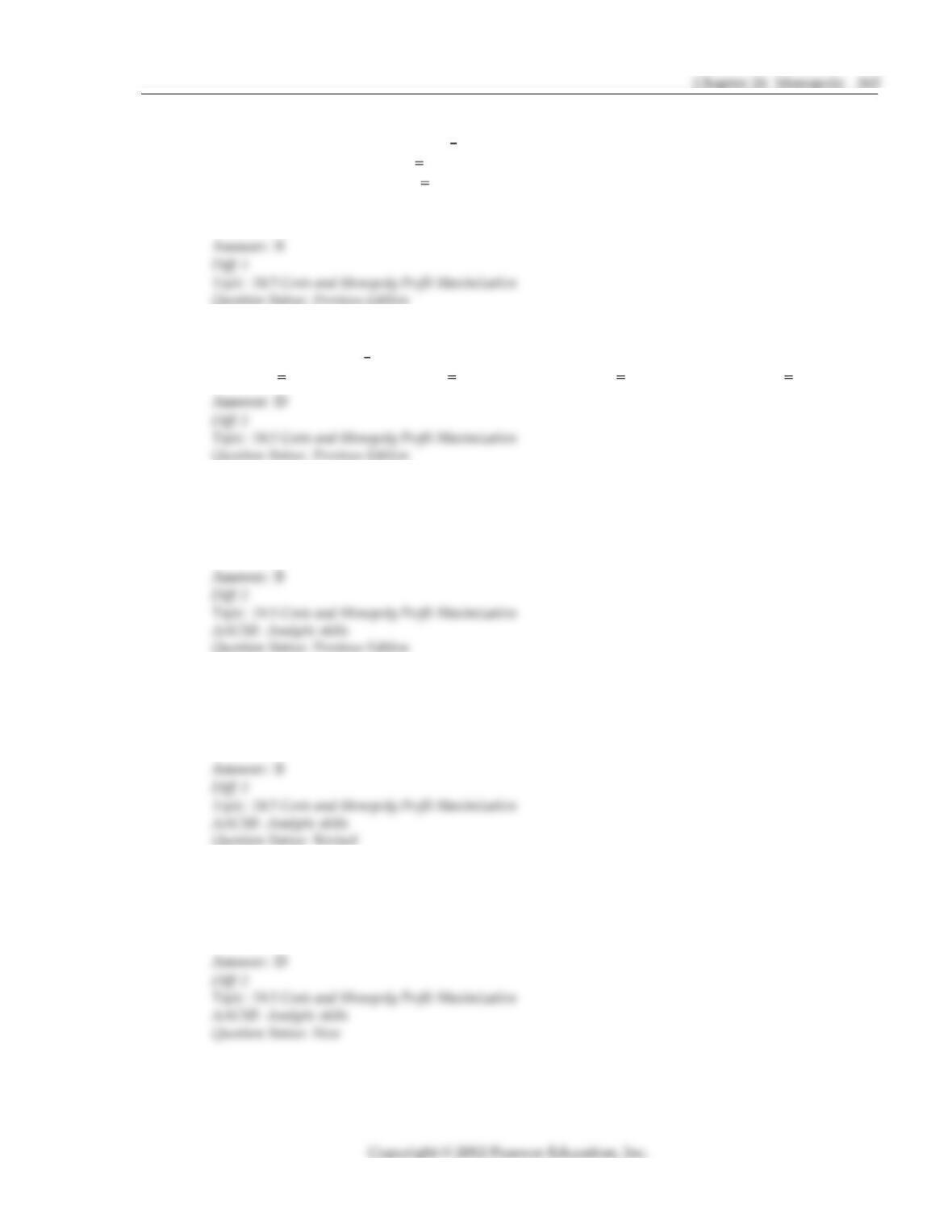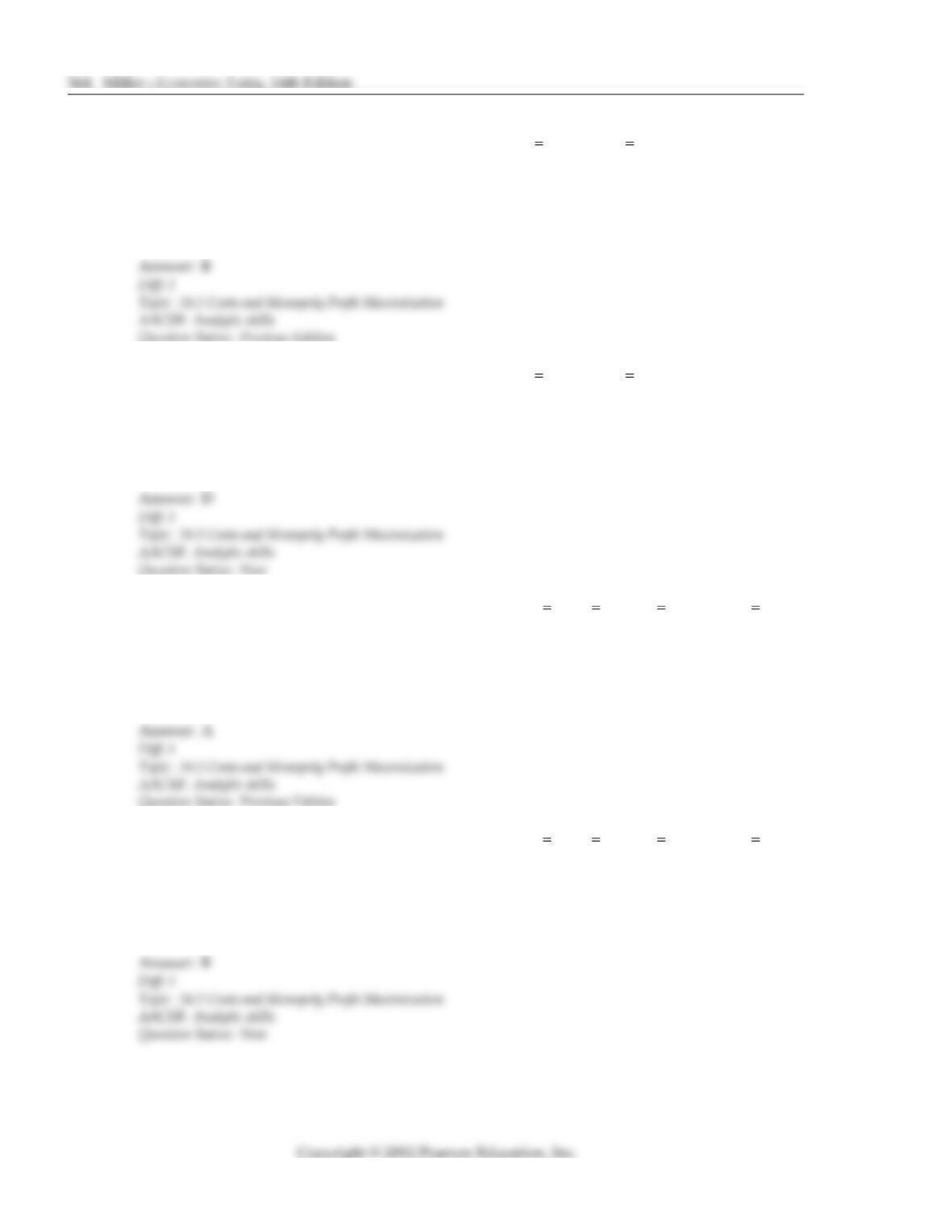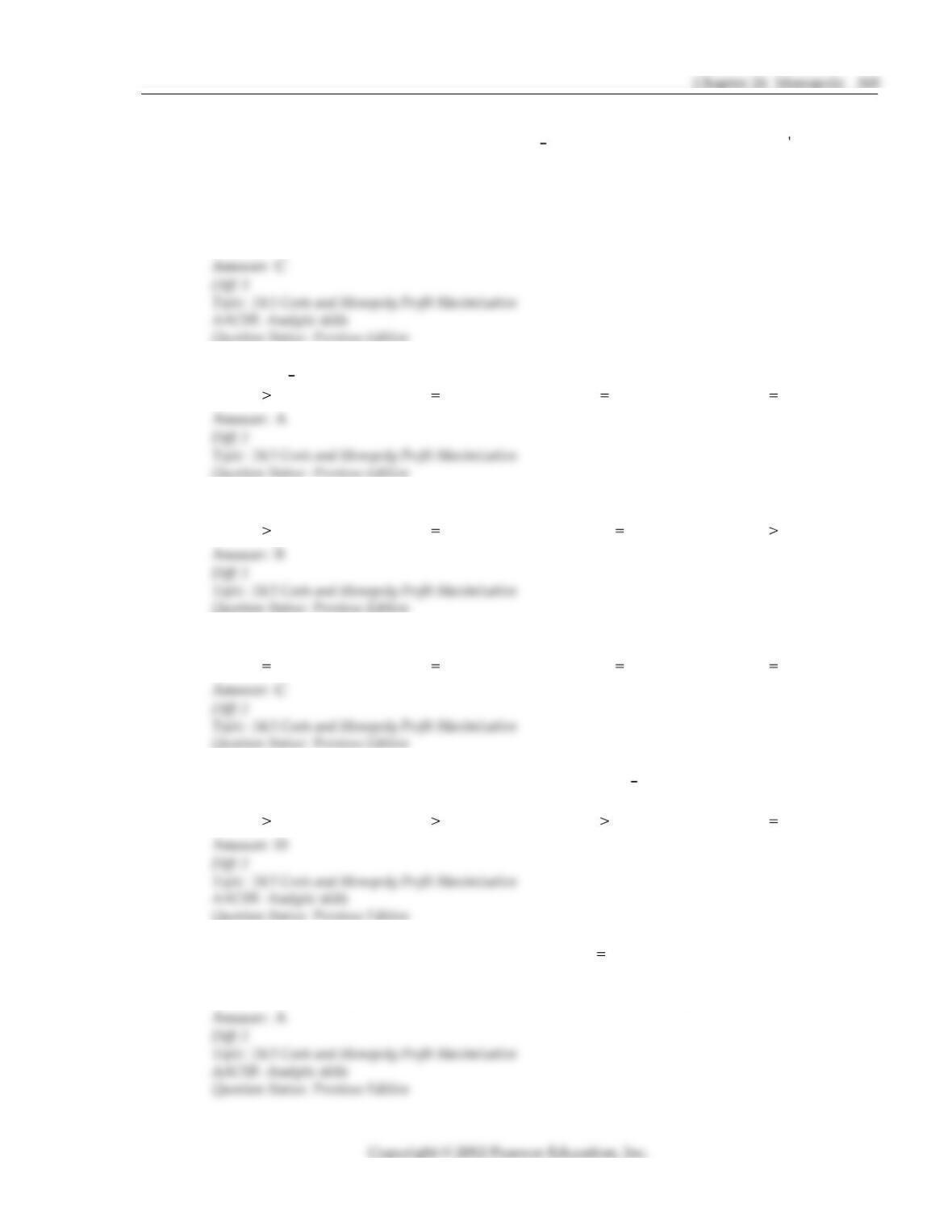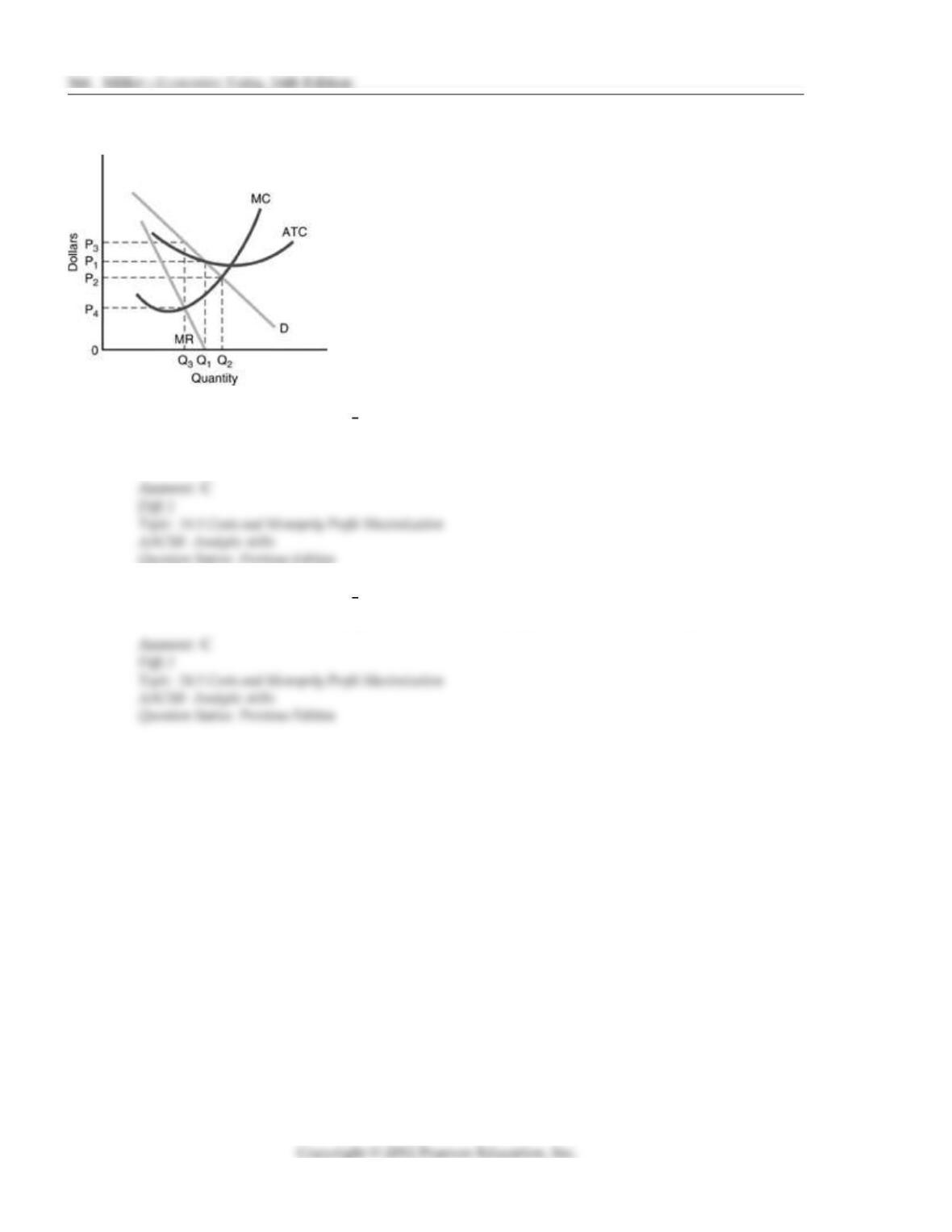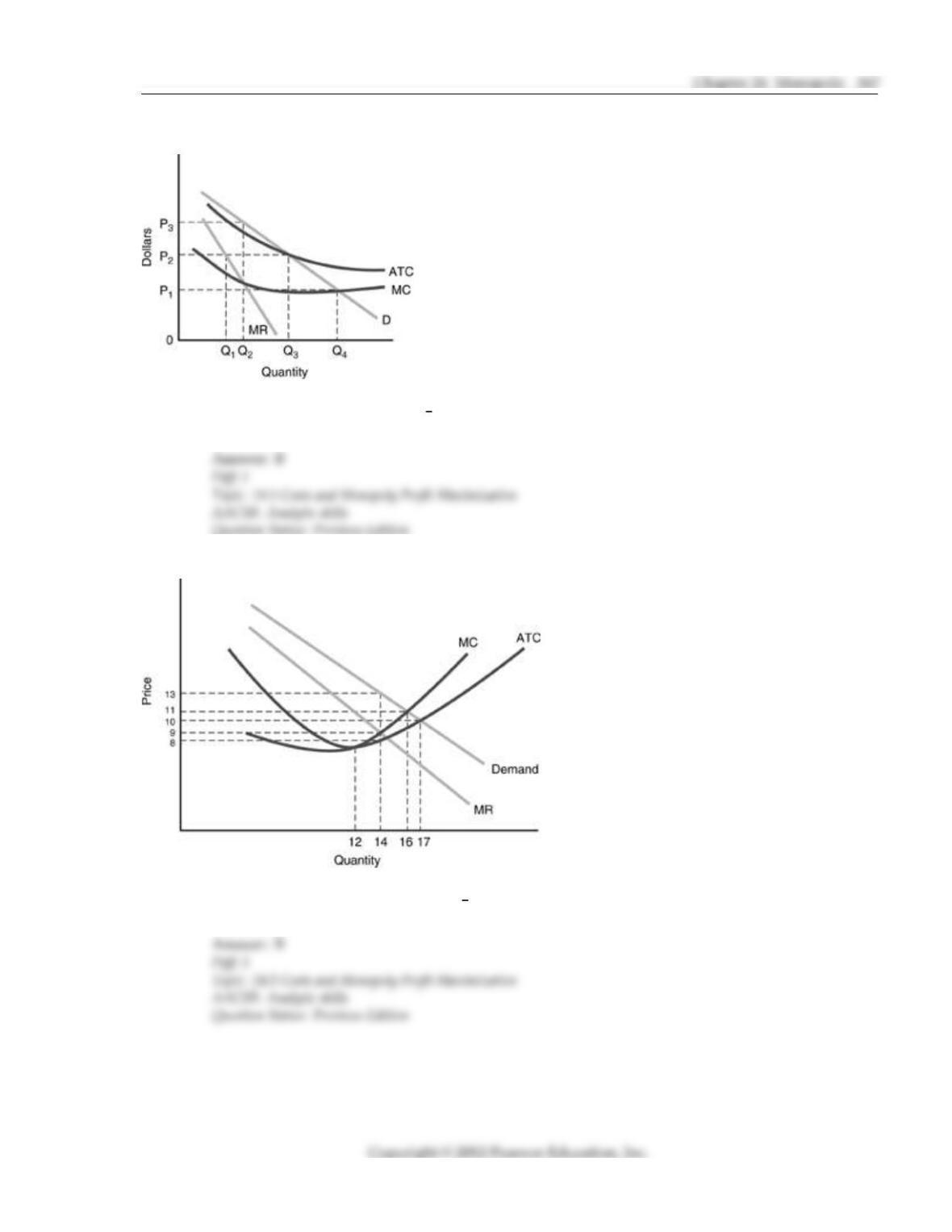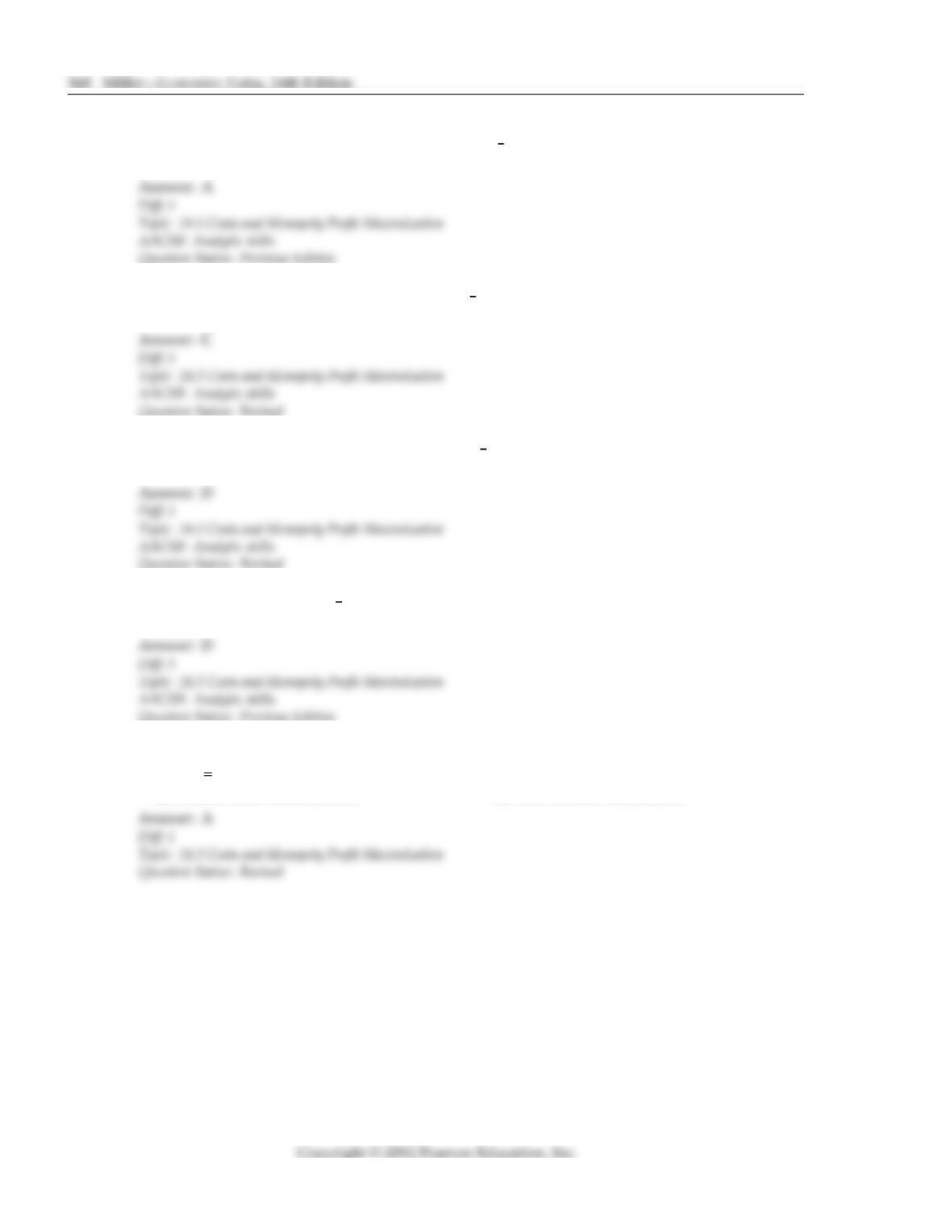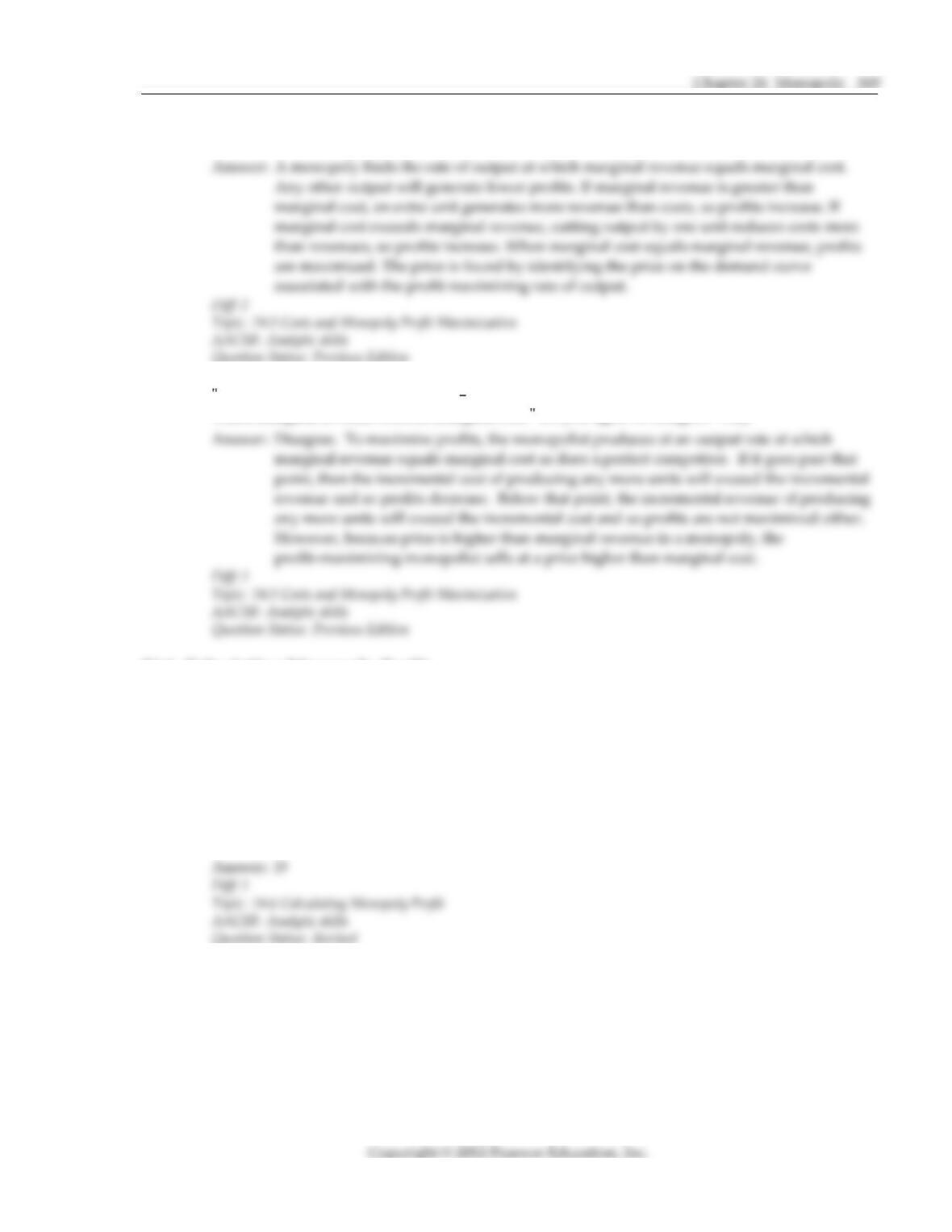44) The monopolist determines the price and quantity combination that maximizes short run
profits by
A) finding the quantity at which marginal cost and marginal revenue are equal and then
using the demand curve to find price.
B) determining the price by finding the highest price at which sales can be made and then
using the demand curve to find the appropriate quantity.
C) finding the point at which marginal revenue and demand intersect. This gives the price
and quantity that maximizes profits.
D) finding the quantity at which average revenue and average total cost are furthest apart.
45) If a monopolist produces to a point at which marginal revenue is less than marginal cost then
A) profits are being maximized.
B) profits will always be negative.
C) the incremental cost of producing the last unit exceeds the incremental revenue.
D) the incremental cost of producing the last unit is less than the incremental revenue.
46) If a monopolist produces to a point at which marginal revenue is greater than marginal cost
then
A) profits are being maximized.
B) profits will always be negative.
C) the incremental cost of producing the last unit exceeds the incremental revenue.
D) the incremental cost of producing the last unit is less than the incremental revenue.
47) If a monopolist produces to a point at which marginal revenue is less than marginal cost then
A) the firm should increase output.
B) the firm should reduce output.
C) the firm is maximizing profits.
D) we do not know if the firm should increase or reduce without more information.
